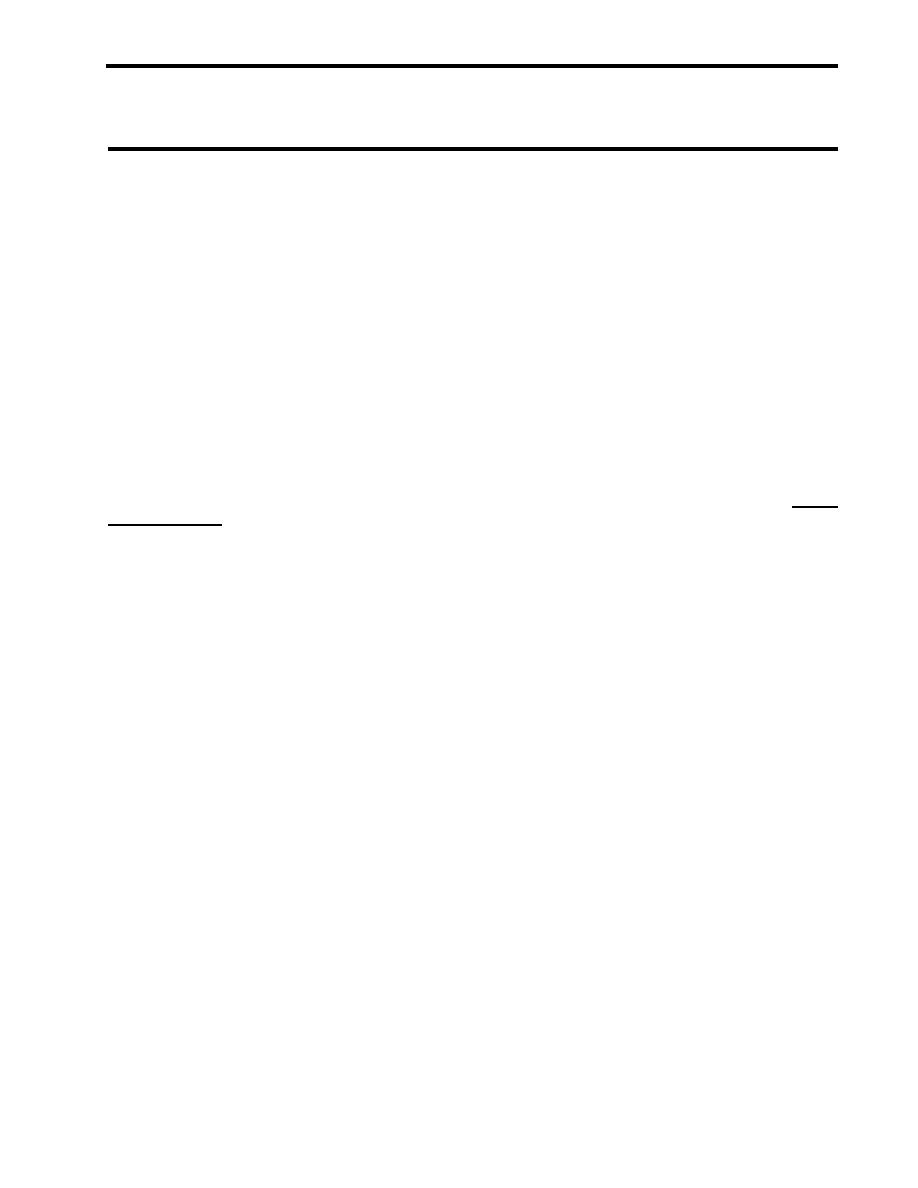
TM 55-1925-282-14&P
OPERATOR, UNIT, DIRECT SUPPORT, AND GENERAL SUPPORT MAINTENANCE
REVERSE OSMOSIS WATER PURIFICATION UNIT FOR
INLAND AND COASTAL LARGE TUG (LT)
GENERAL INFORMATION
GENERAL INFORMATION
SCOPE
The information in this manual applies to all Inland and Coastal Large Tugs (LT) with the Reverse Osmosis Water
Purification Unit (ROWPU) installation. This manual contains operator instructions and maintenance procedures
for the ROWPU system.
MAINTENANCE FORMS, RECORDS, AND REPORTS
Department of the Army forms and procedures used for equipment maintenance will be those prescribed by DA
PAM 738-750, Functional Users Manual for The Army Maintenance Management System (TAMMS) and AR 700-
138, Army Logistics Readiness and Sustainability.
REPORTING EQUIPMENT IMPROVEMENT RECOMMENDATIONS (EIR)
You can help improve this publication. If you find any mistakes or if you know of a way to improve the procedures,
please let us know. Submit your DA Form 2028 (Recommended Changes to Equipment Technical Publications)
through the Internet on the Army Electronic Product Support (AEPS) Web site. The Internet address is https://
aeps.ria.army.mil. The DA Form 2028 is located under the Public Applications section on the AEPS public home
page. Fill out the form and click on SUBMIT. Using this form on the AEPS site will enable us to respond quicker
to your comments and better manage the DA Form 2028 program. You may also mail, fax, or e-mail your letter
or DA Form 2028 directly to: AMSTA-LC-LMIT / TECH PUBS, TACOM-RI, 1 Rock Island Arsenal, Rock Island, IL
61299-7630. The e-mail address is TACOM-TECH-PUBS@ria.army.mil. The fax number is DSN 793-0726 or
Commercial (309) 782-0726.
CORROSION PREVENTION AND CONTROL (CPC)
Corrosion Prevention and Control (CPC) of Army materiel is a continuing concern. It is important that any corro-
sion problems with this item be reported so that the problem can be corrected and improvements can be made to
prevent the problem in future items.
Corrosion specifically occurs with metals. It is an electrochemical process that causes the degradation of metals.
It is commonly caused by exposure to moisture, acids, bases, or salts. An example is the rusting of iron. Corro-
sion damage in metals can be seen, depending on the metal, as tarnishing, pitting, fogging, surface residue, and/
or cracking.
Plastics, composites, and rubbers can also degrade. Degradation is caused by thermal (heat), oxidation (oxy-
gen), solvation (solvents), or photolytic (light, typically UV) processes. The most common exposures are exces-
sive heat or light. Damage from these processes will appear as cracking, softening, swelling, and/or breaking.
If a corrosion problem is identified, it can be reported using SF 368 (Product Quality Deficiency Report). Use of
key words such as "corrosion," "rust," "deterioration," or "cracking" will ensure that the information is identified as
a CPC problem. The form should be submitted to the address specified in DA PAM 738-750, Functional Users
Manual for The Army Maintenance Management Systems (TAMMS).
OZONE DEPLETING SUBSTANCES
There are no Ozone Depleting Substances (ODS) contained in the ROWPU system.
0001 00-1

